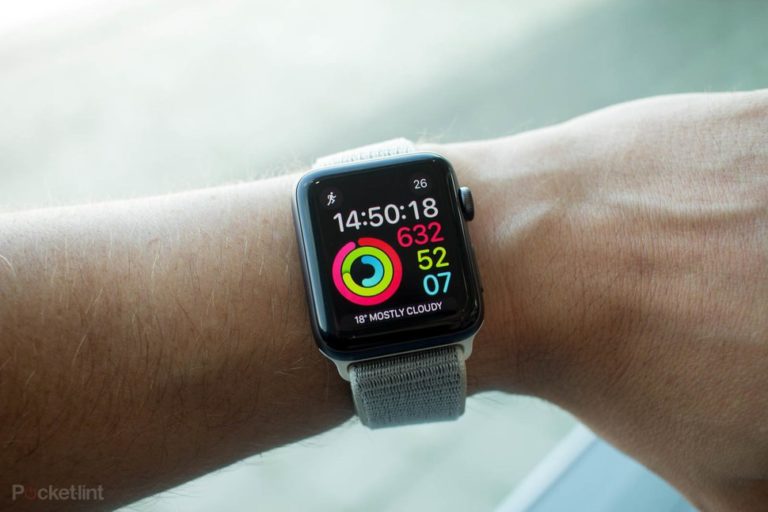A new two-dimensional electronic technology may be able to collect radio energy to power a variety of devices, such as hearing aids, sensors, and other tools that make up the so-called “Internet of Things”.
It may be a semi-conductive, flexible, flat material that can harvest energy from radio signals that penetrate urban environments, the energy source of a new generation of electronics.
A thin layer of molybdenum disulfide (MoS 2 ), a two-dimensional material with a thickness of just three atoms, can act as an antenna to divert radio signals from Wi-Fi networks, according to a team from the Massachusetts Institute of Technology. Wi-Fi, cellular phones, and radio or TV broadcasts into power for wireless devices.Such technology can bring energy-saving devices – such as pacemakers, hearing aids, and sensors – into the Internet of Things (IoT) world.
The power supply from the technology will not be enough to charge cell phones and tablets until the technology has made significant advances. Even the power needs of an electronic bracelet from Fitbit will be slightly larger than the energy harvested.But there may be a small step on the way to generating power from Wi-Fi signals at our fingertips.“The future of electronics brings intelligence to every body in our lives, from our clothes, to our offices, to our infrastructure,” says Thomas Palacios, a professor of electrical engineering at the Massachusetts Institute of Technology.”The missing key is how to power all these billions of devices,” he says. Thomas believes that thin layers of molybdenum disulfide are a promising option because of their flexibility and the possibility of producing them at a low cost by printing using automated bobbins.
A group from MIT presented a flexible material that can harvest radio energy at frequencies up to 10 GHz, frequencies covering the commonly used 2.4 GHz and 5 GHz bands, which carry Wi-Fi and other radiocommunication signals.Flexibility is a necessary feature of wearable electronic devices, as well as for many other sensor applications, but in general other flexible materials absorb little radio energy at frequencies above 1.6 GHz, limiting their ability to harvest energy.Palacios says two-dimensional semiconductors can harvest 30 to 50 microns of Wi-Fi signals in the surrounding environment of about 100 microns, enough to power pacemakers and hearing aids. , Emotion and stress sensors, telecommunications devices, and many low-power IoT devices.Such a system can operate without a battery, which makes it lightweight, and avoids problems such as leaks from the power source of a medical device implanted inside the body.
Digi Akinwandu, an electrical and computer engineer from the University of Texas at Austin who was not involved in the work, talks about the MIT team’s achievement. “This is an important initial demonstration of the energy harvesting of surrounding Wi-Fi signals,” he said. “It seemed more interesting because everything was integrated into the same flexible substrate. The next challenge is to increase the efficiency of the devices to produce more power to run contemporary mobile applications.”
Power-harvesting systems already exist that power other remotely powered devices to avoid the need to replace the battery frequently.Most current systems derive their energy from light, temperature differences or kinetic energy, says Andreas Schneider, chief executive of EnOcean, which was not involved in the research, a German manufacturer that produces self-powered devices without batteries. .He adds that photovoltaics can get enough light energy to power indoor devices with lighting levels of up to 100 lux, roughly the level of arcade lighting and less than a third of standard office lighting levels.Pressing a mechanical switch can produce enough power to send a signal to turn on a lamp in the room or upstairs.Temperature gradients along hot water pipes can send signals to the heating system.However, the company found that the ambient radio signal power was insufficient to power existing devices unless additional local radio transmitters were added, which Schneider says “you wouldn’t want to be near” because of concerns that electromagnetic fields could reach Levels may harm health.
Looking at the future of 5G wireless networks and the Internet of Things, Palacios says: “You can use solar cells to generate power, but sunlight is only available during the day. So the other option is to harvest the energy already in radio-frequency signals, like Wi-Fi, which fills most of the time. “
Radio power harvesters and radio signal receivers collect energy when radio passes interact with antennas.Electromagnetic forces attract the electrons in the conducting material back and forth, generating an electric current that alternates in direction with the alternating phase of the waves.The antennas that collect signals for radio signal receivers transmit oscillating signals to circuits, which in turn amplify the signals, converting them into audio or video frequencies.Antennas that pick up radio energy send oscillating current to an electronic device called a “rectifier,” which allows the current to pass in only one direction, converting the incoming AC into direct current that can power electronic devices or charge batteries.
Current rectifiers are usually semiconductors, and antennas are usually made of metals and have high conductivity.Palacios says molybdenum disulfide is a “very good semiconductor.” It can be modified to make it highly conductive, so it can act both as an antenna and as a current rectifier, a device called a rectenna, meaning an antenna and a rectifier in a single device, invented in the 1960s and now used to identify Devices and objects using radio frequency (RFID), and in smart cards.
Most current Rectina devices consist of small, rigid chips of inflexible semiconductors, such as silicon, that have a good frequency response, but are flawed.The MIT Group is the first group to make large, flexible Rectina devices that can harvest power from commonly used unlicensed radio frequencies of up to 10 GHz without the need for a battery voltage to start the process.Flexibility and thinness are essential features for use in wearable devices and ” smart exterior surfaces “, which can be used in infrastructure, aircraft, or other equipment for continuous monitoring, or as part of a distributed network of smart sensors.Layers with a thickness of only three atoms can be made by a commonly used process in the semiconductor industry, at low cost, over a large area, and still operate at very high frequencies, the chemical vapor deposition.
This technique has not yet come out of the laboratory. Production volumes must be increased, and thin layers must be integrated with the devices that will supply them with energy.Another challenge is to design devices that operate with as little as a dozen microwaves.But Palacios is expected to see the first commercial uses within five to seven years.”The main thing you need is to increase manufacturing capacity,” he says. “We need to develop an approach that allows us to manufacture sensors on a very large area, at a low cost.”Additional uses that Palacios expects include lighting small displays by saving 30 to 50 microns of power and connecting implantable medical devices to external monitors.For a few applications, at least, energy can already be harvested from hidden signals in ambient air.




